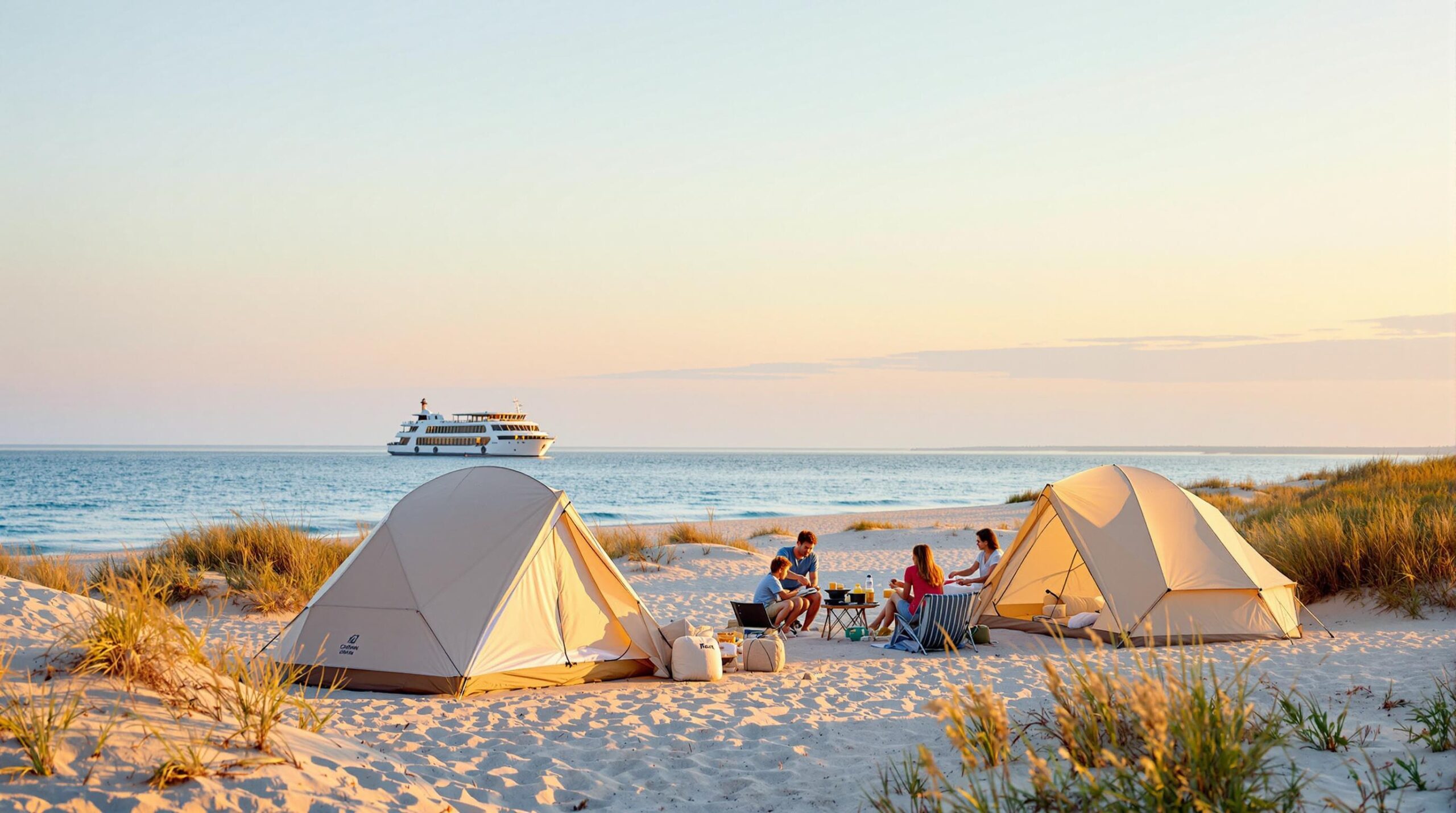Hammocks Beach State Park on North Carolina’s southern Outer Banks, also known as the Crystal Coast, near Swansboro in Onslow County, is simultaneously adding new beds and reviving a signature barrier-island experience, a one-two punch that broadens its lodging mix and restores ferry access prized by coastal campers. The park will cut the ribbon on the 22-site Simmons Mainland Campground on Aug. 10, 2024, then follow up by reopening Bear Island’s oceanside campsites and passenger ferry service on May 14, 2025.
The twin moves mean travelers arriving in Swansboro will have everything from a mainland campground with scenic views of Queens Creek and outdoor steel fire pits at each site to a four-mile beach on Bear Island. For private campground and RV-resort operators watching the public sector’s playbook, the projects also offer a case study in revenue strategy and in managing unavoidable downtime.
Simmons Mainland Campground occupies eight acres on the former Simmons FFA campsite on the mainland side of Hammocks Beach State Park. According to a state announcement, the footprint packs 22 campsites—12 RV hook-up pads at $36 a night, seven non-electric pads at $26, and three primitive tent sites—plus four climate-controlled cabins that sleep six for $78 per night. Each site comes with an outdoor fire pit, and a common bathhouse offers men’s and women’s showers and toilets. Reservations run through the North Carolina State Parks website, and officials expect the campground to be fully operational by Labor Day.
For operators weighing how to squeeze maximum yield from limited acreage, Simmons illustrates the value of mixing lodging types rather than repeating the same pad. A cluster of RV hook-ups anchors core demand, non-electric pads target budget guests, primitive walk-ins attract purists, and the four cabins extend the season by appealing to families who camp in cooler weather.
Tiered pricing tied to utility levels, privacy and creature comforts lets managers nudge average daily rates without expanding their footprint. Packaging add-ons—firewood bundles, kayak rentals or day-use parking—at the point of booking further lifts revenue, while two-night minimums on weekends balance mid-week flexibility. Tracking occupancy by site category rather than in aggregate then guides future expansion or rate decisions.
The park’s second project required a far different calculus. The North Carolina Division of Parks and Recreation shut down all ferry runs and campsites on March 28, 2024, to replace aging water and septic systems, according to the division’s announcement issued that day. “We recognize that Bear Island is a popular summer destination for many of our visitors,” Brian Strong, state parks director for the N.C. Division of Parks and Recreation, said in the announcement.
“However, the health and safety of our visitors and staff always comes first and foremost. We are excited about the opportunity to enhance the infrastructure on Bear Island, as making these improvements will allow for a better experience when visiting the park for many years to come.”
The closure halted new reservations, suspended ferry service that normally begins in April and left the island without potable water or restroom facilities while crews worked. Staff contacted guests holding reservations to arrange alternatives, and free educational programs continued on the mainland.
Operators who face their own system overhauls can take several cues from the Bear Island timeline. Scheduling disruptive work for historically lower-demand windows limits lost revenue. Maintaining some level of operation—day-use programs in this case—keeps visitors engaged.
A single, authoritative information page and automated email updates curb rumors and free staff from constantly fielding calls. Offering date-flex credits rather than blanket refunds preserves cash flow and goodwill, while a focused reopening campaign highlights tangible benefits and helps recapture market share. Finally, oversizing conduits or adding stub-outs for future EV chargers and fiber while trenches are open avoids repeat digging and stretches capital dollars.
With construction complete, Bear Island’s restored ferry and 14 oceanside tent pads resume service May 14, 2025, and reservations opened two weeks earlier. Visitors now find 2.3 miles of mainland trails, four miles of beach and a roster of paddling routes, swimming areas, fishing spots and picnic sites listed by the park. The mainland campground remains open year-round, giving the site a broadened shoulder-season product.
The upgraded utilities also lay the groundwork for future growth. With modern water and septic lines in place, the park can consider adding more cabins, installing EV charging or running fiber to remote bathhouses—improvements private operators may wish to audit for their own properties while funding streams and trench lines are accessible.
North Carolina’s latest investment underscores rising demand for flexible, diversified outdoor lodging and the payoff of proactive infrastructure spending. As Hammocks Beach shows, mixing site types for revenue today and modernizing back-of-house systems for tomorrow can help any campground—public or private—extend its season, protect guest experience and stay ahead of the next surge in outdoor travel. How many of those tactics are penciled into your own capital plan?


